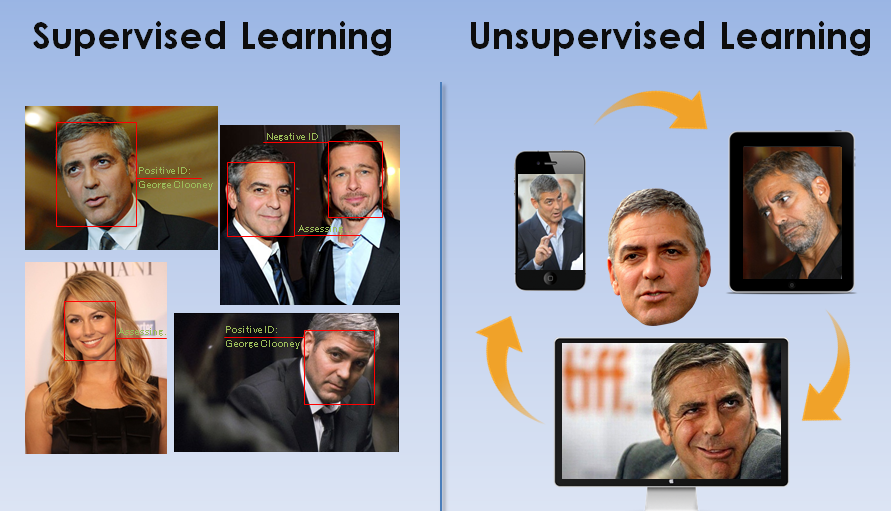

Understanding the Basics of Artificial Intelligence and Machine Learning






Lately, Artificial Intelligence and Machine Learning is a hot topic in the tech industry. Perhaps more than our daily lives Artificial Intelligence (AI) is impacting the business world more. There was about $300 million in venture capital invested in AI startups in 2014, a 300% increase than a year before (Bloomberg).
Hey there! This blog is almost about 1000+ words long and may take ~5 mins to go through the whole thing. We understand that you might not have that much time.
This is precisely why we made a short video on the topic. It is less than 2 mins, and simplifies Artificial intelligence & Machine learning. We hope this helps you learn more and save your time. Cheers!
AI is everywhere, from gaming stations to maintaining complex information at work. Computer Engineers and Scientists are working hard to impart intelligent behavior in the machines making them think and respond to real-time situations. AI is transiting from just a research topic to the early stages of enterprise adoption. Tech giants like Google and Facebook have placed huge bets on Artificial Intelligence and Machine Learning and are already using it in their products. But this is just the beginning, over the next few years, we may see AI steadily glide into one product after another.
According to Stanford Researcher, John McCarthy, “Artificial Intelligence is the science and engineering of making intelligent machines, especially intelligent computer programs. Artificial Intelligence is related to the similar task of using computers to understand human intelligence, but AI does not have to confine itself to methods that are biologically observable.”
Simply put, AI’s goal is to make computers/computer programs smart enough to imitate the human mind behaviour.
Knowledge Engineering is an essential part of AI research. Machines and programs need to have bountiful information related to the world to often act and react like human beings. AI must have access to properties, categories, objects and relations between all of them to implement knowledge engineering. AI solutions initiate common sense, problem-solving, and analytical reasoning power in machines, which is a complex and tedious job.
AI services can be classified into Vertical or Horizontal AI
These are services focus on the single job, whether that’s scheduling meeting, automating repetitive work, etc. Vertical AI Bots performs just one job for you and do it so well, that we might mistake them for a human.
These services are such that they are able to handle multiple tasks. There is no single job to be done. Cortana, Siri and Alexa are some of the examples of Horizontal AI. These services work more massively as the question and answer settings, such as “What is the temperature in New York?” or “Call Alex”. They work for multiple tasks and not just for a particular task entirely.
AI is achieved by analysing how the human brain works while solving an issue and then using that analytical problem-solving techniques to build complex algorithms to perform similar tasks. AI is an automated decision-making system, which continuously learn, adapt, suggest and take actions automatically. At the core, they require algorithms which are able to learn from their experience. This is where Machine Learning comes into the picture.

Weak AI, known as Narrow AI, is designed with predefined rules catering to specific tasks. It operates within set parameters and excels at solving a particular problem or automating a single process. Weak AI possesses the human mind's cognitive abilities, but unlike general intelligence, it’s tailored to fulfill distinct assignments intelligently.
A great example of weak AI is John Searle’s room thought experiment. In this experiment, two individuals converse in Chinese, one outside and one inside a room. Here, the person inside the room is given instructions on how to reply when speaking in Chinese.
Though it may appear to the person outside that the person inside is proficient in speaking Chinese, their capability is rooted in following provided instructions. In reality, the person inside the room is adept at following instructions and not speaking Chinese.
Narrow AI has specific intelligence and doesn’t possess general intelligence. Therefore, an AI programmed to guide you on how to reach from point A to point B isn’t capable of playing a game of chess with you. Similarly, a type of AI that pretends to converse in Chinese cannot fold your clothes or wash your car.
Strong AI, or artificial general intelligence, possesses mental capabilities like the human brain. They’re intelligible systems whose actions and decision-making replicate that of a human being, including their power of understanding and consciousness.
Strong AI can clone distinctive human features like beliefs, cognitive abilities, and perception. Defining intelligence, setting boundaries, and predicting success ratio are some of the most arduous challenges when working with strong AI.
Due to the above reasons, weak AI is preferred, as it performs designated tasks optimally. It doesn’t need a comprehensive intelligence, and its development is modular and manageable.
Devices or systems powered by Strong AI use their cognitive abilities to learn and solve problems similar to or, in some cases, better than humans. This fuels continual growth and investment in this domain.
Finance industries significantly benefit from using AI. Leveraging subsets of AI, like ML and cognitive computing, assisted by techs like big data, cloud services, and hyper-processing systems, the finance industry can develop chatbots and personal assistants.
As predicted by thought leaders, replacing humans is the ultimate future of AI. Yet, achieving this feat is difficult as AI grapples with bias, lack of trust, and regulatory compliance. Therefore, companies seek to balance automation and assistance by employing augmented intelligence.
AI creates job opportunities in financial audits, tax analysis, and intelligent decision-making. The primary goal for businesses using AI is to achieve harmony between human and machine intelligence.
Artificial Intelligence and Machine Learning are much trending and also confused terms nowadays. Machine Learning (ML) is a subset of Artificial Intelligence. ML is a science of designing and applying algorithms that are able to learn things from past cases. If some behaviour exists in past, then you may predict if or it can happen again. Means if there are no past cases then there is no prediction.
ML can be applied to solve tough issues like credit card fraud detection, enable self-driving cars and face detection and recognition. ML uses complex algorithms that constantly iterate over large data sets, analyzing the patterns in data and facilitating machines to respond different situations for which they have not been explicitly programmed. The machines learn from the history to produce reliable results. The ML algorithms use Computer Science and Statistics to predict rational outputs.
There are 3 major areas of ML:
In supervised learning, training datasets are provided to the system. Supervised learning algorithms analyse the data and produce an inferred function. The correct solution thus produced can be used for mapping new examples. Credit card fraud detection is one of the examples of Supervised Learning algorithm.

Supervised Learning and Unsupervised Learning (Reference: http://dataconomy.com/whats-the-difference-between-supervised-and-unsupervised-learning/)
Unsupervised Learning algorithms are much harder because the data to be fed is unclustered instead of datasets. Here the goal is to have the machine learn on its own without any supervision. The correct solution of any problem is not provided. The algorithm itself finds the patterns in the data. One of the examples of supervised learning is Recommendation engines which are there on all e-commerce sites or also on Facebook friend request suggestion mechanism.

Recommendation Engine
This type of Machine Learning algorithms allows software agents and machines to automatically determine the ideal behaviour within a specific context, to maximise its performance. Reinforcement learning is defined by characterising a learning problem and not by characterising learning methods. Any method which is well suited to solve the problem, we consider it to be the reinforcement learning method. Reinforcement learning assumes that a software agent i.e. a robot, or a computer program or a bot, connect with a dynamic environment to attain a definite goal. This technique selects the action that would give expected output efficiently and rapidly.
AI and Machine Learning (ML) can work in tandem to comprehend and study vast sums of data, extract relevant insights, and make future forecasts based on past trends and patterns. When used in a suitable capacity, these techs can revolutionize the software industry by enhancing overall productivity and efficiency of internal processes.
AI and ML allow applications to inculcate intricate functionalities like voice recognition, predictive analytics, and natural language processing while facilitating intelligent automation. This opens new avenues for diverse industries like marketing, healthcare, and customer service.
Harnessing the power of AI and ML allows programmers to craft innovative systems with the potential to craft tailored solutions, learn user preferences, and automate daily tasks. They aid user satisfaction and enable businesses to optimize operations and create new revenue streams.
AI and machine learning herald a new era of software, with perceptive systems that can execute tasks once confined to human abilities.
Artificial Intelligence and Machine Learning always interest and surprise us with their innovations. AI and ML have reached industries like customer service, e-commerce, finance, and others. By 2020, 85% of the customer interactions will be managed without a human (Gartner). There are specific implications of AI and ML to incorporate data analysis like descriptive analytics, predictive analytics, and predictive analytics, discussed in our next blog: How can machine learning boost your predictive analytics?


